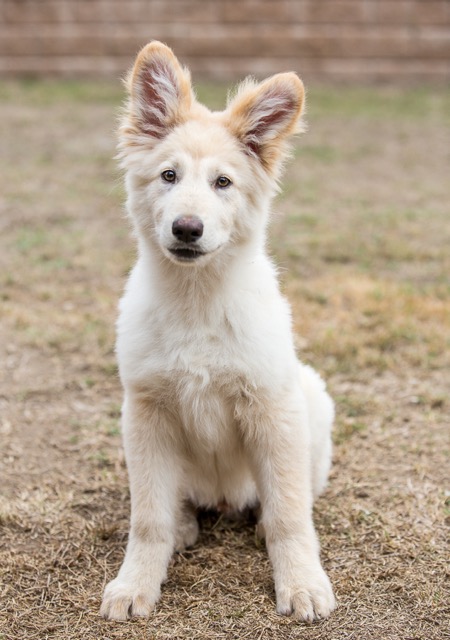Every single morning since I met David he would get up at the crack of dawn to walk Sasha before the Tucson sun made it too hot for either one of them to be able to enjoy a walk.
Sasha was a Border Collie Mix, with a lot of mix, and she and David had one of those kind of dog/man relationships that dog lovers understand well. Sasha would come over to David when he was in his chair and David would put down his book or his iphone and say, “What?” and Sasha would look at him, nod her chin up and down a time or two and maybe wag her tail a time or two and David would reach out and pet her lovingly on top of her head.
It was almost like they talked to each other.
I had walked out to the breakfast table one morning to find the two of them just looking at each other. They were almost forehead to forehead and David’s big hands were scrunching Sasha behind her ears while he cooed and talked to her and called her his “good dog.” They stayed that way for a prolonged few moments, just being with each other in a kind of intimacy and I could see Sasha actually quivering with pleasure from the contact and attention.
I had never seen anything like it before but I recognized it. I was looking at two beings giving love to each other.
To me, dogs had always represented chores—feeding, buying dog food, going to vet appointments, the groomer, vacuuming up dander, etc. I had never really bonded with a dog and pretty much didn’t know what the fuss was about. Certainly I had never loved a dog and at the time that I saw David and Sasha just looking at each other and felt the energy going between them, this domesticated animal and this man, I couldn’t put words to it.
As it turns out however, I recently happened to read an article in the New York Times that did put words to it. In fact, it gave a scientific explanation for what I had witnessed between David and Sasha all those years ago:
“Dogs who trained a long gaze on their owners had elevated levels of oxytocin, a hormone produced in the brain that is associated with nurturing and attachment, similar to the feel-good feedback that bolsters bonding between parent and child.
Dogs have acquired the superior ability during the evolutionary and domestication process of living with humans. There is a possibility that they cleverly and unknowingly utilized a natural system meant for bonding a parent with his or her child.” ~The Look of Love Is in the Dog’s Eyes, Jan Hoffman, New York Times
That morning when I saw David and Sasha at the breakfast table, they were exchanging that good feelings feedback that bolstered bonding and, while the researchers said they didn’t know what a dog’s gaze meant, they added that maybe the dog was just hugging its human with its eyes.
As far as I was concerned, every time I saw Sasha gazing at David, that’s exactly what it looked like to me, like Sasha was “hugging him with her eyes.” What’s more, I instinctly recognized the look in Sasha’s eyes: it reminded me of the look in my own newborn baby’s eyes.
Not being a sentimental guy, David would tell me that Sasha gazed at him the way she did because she knew everything, her walks, her food, her baths, depended on him. But after reading the article, I learned that Sasha wasn’t the only one getting her needs met.
When Sasha gazed at him, David’s levels of oxytocin increased too!
It was a feel good fest!
Things then, however, took a tragic turn and the story of David and Sasha wasn’t to last too much longer.
About a year after I came on the scene, the tumor that had been latent on Sasha’s haunch began to grow again. Having been surgically removed twice, it was, this time, inoperable and, after living with it for many months, finally got to be too much for Sasha to bear.
David had to put her down.
He made an appointment with the vet and when the day came I asked him if he wanted me to go with him. “No,” he said, he wanted to go alone but asked me if I would please be home waiting for him when he got back.
I watched from my office window as David and his dog walked together out to the truck for the last time. David opened the door and Sasha, obedient as ever, tried to jump in but she couldn’t. David bent down and, picking up all 40 pounds of her, slid her into the front seat to drive the four blocks to the vet’s office.
As I would later read in the New York Times, researchers had found that through domestication, dogs came to see their humans as their “key social partners” while humans also came to view dogs as the same. Although I didn’t know enough then to have applied that label to their relationship, there is now no question in my mind that David and Sasha had been just that over the years, “key social partners” to each other.
When David pulled up about a half hour later he walked up to our door alone. I
stood up at my desk and he came directly over to me, gathered me into his arms and buried his face in my neck. His breath was hot and I could feel his chest quaking against mine.
“She knew,” he said, “she knew,” his voice cracking.
“How could she have known?” I challenged and he told me that when he walked up to the desk at the vet’s to sign her in, she came up beside him and pressed her head up against his thigh.
“Fundamentally, for dogs, human behavior is the telltale of everything that is about to happen. They’re not reluctant to tune in to us at every moment.” ~ Jan Hoffman
For months after Sasha was gone, when David and I were on our walk by the dry bed of the river he would stop and for the 2nd or 3rd time point to its steep rock filled banks and tell me again how Sasha used to run down those rocky banks and then bound up the other side.
“She’d stand there proud as hell,” he’d say, and then she’d look back at him, to make sure he could see her.
“It was like she wanted me to know,” he said.
I would look at the outcropping David was pointing to, and even though I wasn’t anywhere near being Sasha’s “key social partner,” I swear, her spirit would come back just to be sure I too could see her proudly standing there.
Sure enough, there she’d be as I stood carefully watching, “hugging us with her eyes.”
Epilogue:
Having seen with my own eyes and experienced in my own heart the loving energy that flowed between my new husband and his dog, I knew that it was imperative that we/he have another dog. Put quite simply, it was worth all the buying of dog food, trips to the vet, and vacuuming up dander. I wanted that love energy in my home. Just before Christmas, David and I went to the pound to pick out another dog.
Standing alone, almost shivering, in one of the kennels was a very tired, very weak looking Highland Terrier. David asked the clerk to let her out so that he could hold her. He picked her up in his arms, and characteristically put his face down next to hers. She had been shaved and spayed and her head was encircled in one of those plastic cones they put around dogs so they won’t bother their stitches.
“Poor little dog,” David murmured to her.
I wasn’t surprised in the least when he turned to the clerk and said, “We’ll take her.”
Relephant:
Crazy (Dog) Love.
Author: Carmelene Siani
Editor: Renée Picard
Image: Mary Siani Photography (via the author & used with permission)







Read 2 comments and reply